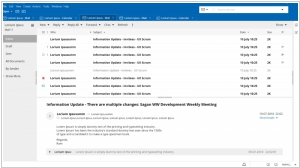HLC Notes is #14 in Top 10 Email Servers
HLC Notes (formerly IBM Lotus Notes) is email software that gives teams access to email, calendar and contact management capabilities, and seamlessly integrates other collaboration tools and Domino business applications.
Positions in ratings
#14 in Top 10 Email Servers
Alternatives
The best alternatives to HLC Notes are: Microsoft Exchange, Outlook, Microsoft 365
See also:
Top 10 Email Servers
Top 10 Email Servers
Latest news about HLC Notes
2018. IBM sold Lotus Notes/Domino, Websphere Portal and other software to HCL
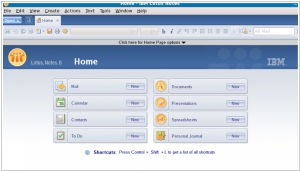
IBM is in the process of selling its renowned enterprise collaboration software, Lotus Notes, to the Indian company HCL for $1.8 billion. These products have been a significant component of IBM's enterprise business for a considerable period. However, last year, IBM began divesting the development segment to HCL while retaining control over sales and marketing. With the platform's development now outside of IBM's purview and the need for funds after a $34 billion expenditure on Red Hat, it appears that IBM decided it was no longer viable to retain any part of Lotus Notes in-house. On the other hand, HCL recognizes an opportunity to further develop the Notes/Domino business and is seizing it through this acquisition. HCL's interest in Notes/Domino surpasses what IBM has shown over the past decade, as they are heavily investing in rejuvenating the brand. Notes and Domino still maintain a presence in various enterprise sectors, particularly in EMEA (Europe, Middle East, and Africa). This strategic move aligns with IBM's shift towards advancing its cloud business in a different direction. The acquisition of Red Hat in October, in particular, demonstrates IBM's focus on embracing private and hybrid cloud deployments, whereas older software like Lotus Notes and Domino have limited relevance in this new realm.
2013. IBM kills Lotus. Microsoft kills SharePoint
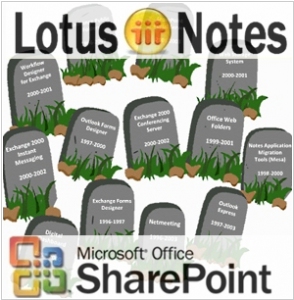
Perhaps the two most famous brands in the history of enterprise software, Lotus and SharePoint, will soon disappear. We mean brands, not specific products. Because by renaming their products, vendors try to erase the association with outdated technologies in customer brain. For example, Lotus appeared back in the 80-s years of last century. In 1995 IBM acquired Lotus Development and began selling their products Lotus Notes/Domino. In the following years most IBM collaboration systems moved under the Lotus umbrella. But last year the revolution occurred. The last child of the Lotus family - SaaS suite LotusLive was renamed to SmartCloud for Social Business. And then the name Lotus was removed from other products. The final nail was the recent launch of Notes/Domino 9.0 Social Edition (without Lotus). ***
2010. IBM unveiles SaaS version of Lotus Domino
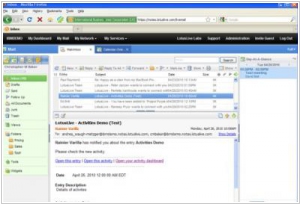
Companies like IBM and Microsoft love to confuse their customers with numerous services and titles. Not so long ago IBM launched the new mail service LotusLive iNotes, that costs $3 per month per user and provides corporate e-mail, contacts and calendar. And today IBM has unveiled another service called LotusLive Notes, that costs $5 per month and also includes e-mail, contacts and calendar. At first glance, the only difference is the price, but in fact the latest service is a multitenant SaaS version of Lotus Domino (Domino - is the name of server software in the traditional in-house Lotus Notes system). How it differs from LotusLive iNotes? ***
2010. Lotus Notes also becomes social
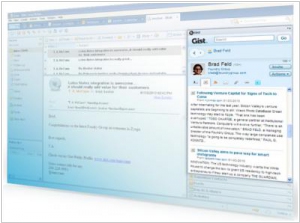
The widely used enterprise email client, MS Outlook, already incorporates a range of Enterprise 2.0 tools. It has integrated features for social networking (Xobni and Outlook Social Connector), Google Apps, Google Docs (Harmony), Remember the Milk, and more. With Outlook's ecosystem already quite diverse, developers have turned their attention to the second most popular enterprise email client, Lotus Notes. As a result, a new plugin and service called Gist has emerged, fulfilling a similar role for Lotus Notes as Xobni does for Outlook. Gist enables users to view the social profiles of their communication partners. It retrieves the latest information about individuals from Facebook, LinkedIn, and Twitter, as well as recent news about their companies from blogs and news sites. Additionally, the plugin presents all relevant correspondence and file exchanges with selected contacts in a convenient format. It's worth noting that Gist is also compatible with Outlook, GMail, iPhone, and can be accessed as a web service.
2010. Project Vulcan - the future of IBM Lotus

The geek-developer dream comes true: a full-on collaboration environment with an open API and a name right out of Star Trek. Today at the Lotushpere conference IBM unveiled Project Vulcan - the new cloud platform for collaboration and social tools, that is already compared to Google Wave. But unlike Google Wave, Vulcan - is not a separate application, but an integrated environment for all future and existing Lotus apps, including Lotus Notes and LotusLive. Vulcan will be available to developers in the second half of 2010, and meanwhile it will be available to LotusLive Labs team, which has already shown 4 new projects for LotusLive: ***
2010. IBM LotusLive sets a new SaaS record, outgoes MS Exchange

IBM has recently secured a contract with Panasonic, which entails that 300,000 employees of the company will utilize the LotusLive SaaS services encompassing email, calendar, web-conferencing, messaging, and file storage. This deployment surpasses the scale of both Google and Salesforce. Undoubtedly, this deal will invigorate the SaaS market and bolster confidence in the SaaS model, particularly given the fact that Panasonic is transitioning from Microsoft Exchange to a SaaS system. Although we were not particularly impressed with LotusLive and its email service, LotusLive iNotes, the Japanese powerhouse deemed it a superior choice compared to Exchange and Google Apps. The decisive factors behind this decision appear to be the cost (LotusLive starting from $3 per user per month) and the reputable IBM brand.
2009. Google unveils Lotus Notes migration tool
Today, Google Apps has introduced a new capability that enables users to migrate from IBM's Lotus Notes, a popular enterprise productivity app. This syncing tool empowers customers to seamlessly transfer their email, calendar, and contacts from Notes to Google Apps. The installation and configuration process for multiple users can be completed in under 30 minutes. The migration is user-friendly, allowing users to continue using Notes without any downtime during the migration process. Furthermore, customers have the flexibility to migrate multiple offices simultaneously or individually, and centralized event logging facilitates efficient management and monitoring of migrations across various Domino servers and sites. Google emphasizes that the significant portion of the business email market, approximately 17%, currently utilizing Lotus Notes, can achieve substantial cost savings by transitioning to Google Apps.
2009. IBM Announces Lotus Notes ActiveSync Support For iPhone
rephrase in one paragraph: IBM just announced Lotus Notes ActiveSync support will be released later this year. The code is already live, and was demonstrated in a seminar earlier today at Lotusphere. This is native integration with the iPhone–within the native mail, calendar, and contacts. Previously, iPhone users were forced to use the mobile Safari browser to access the Notes Web Access interface. Lotus is playing catchup with Microsoft, who released push e-mail for Microsoft Exchange in March 2008. No news yet on Android support, though Ed Brill, IBM Director of Messaging, said few customers are requesting Android support. Similarly, nothing was said about supporting the new Palm Pre platform.
2008. IBM offers Lotus Notes on-demand
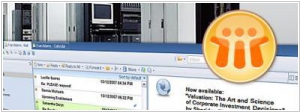
Starting today, IBM is launching Lotus Notes Hosted Messaging, a hosting service for the popular email and collaboration software. In this service, IBM will host Lotus Domino within its data center, and users will have various options to access it: through the web interface called Domino Web Access, the mobile client called Lotus Notes Traveler, or the standard desktop client known as Lotus Notes. Additionally, IBM will handle support, virus protection, and spam filtering as part of the outsourcing process. It's important to note that IBM states this service differs from the traditional Software as a Service (SaaS) model based on multitenant architecture. Instead, each client will have a dedicated Domino server maintained for them. The cost for utilizing Lotus Notes Hosted Messaging is $10 per user per month.
2007. Lotus Notes 8.0 includes free office suite
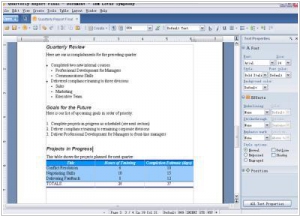
The latest release of IBM's collaborative software, Lotus Notes 8.0, introduces an added bonus in the form of a complimentary office suite called Lotus Symphony, which allows users to edit documents. This suite comprises a word processor, a spreadsheet application, and a presentations editor. Similar to the updated version of Lotus Notes, Lotus Symphony applications are built on the Eclipse platform and provide support for the ODF format (Open Document Format for XML). This format serves as an open, non-proprietary standard, offering an alternative to Microsoft's Open XML. In addition to competing with MS Office, Lotus Symphony also presents itself as a contender to online solutions like Google Docs. Apart from the office suite, the new version of Lotus Notes presents users with a fresh, modern interface in the style of Web 2.0, accompanied by an array of new features for efficient management of mail, calendars, and contacts.
2007. Lotus Notes 8 due for Friday release
IBM is preparing to launch the upcoming version of its Lotus Notes platform and Domino applications, known as Lotus Notes and Domino 8. The release will be exclusively digital, while physical distribution and documentation are scheduled for September 21. Lotus Notes and Domino 8 is built on the Eclipse open-source software framework and revolves around a new platform called Expeditor. Expeditor empowers developers to create Eclipse-based code for cross-platform functionality on Linux, Mac OS X, and Windows. IBM has highlighted in its prerelease notes that version 8 will deliver a contemporary web-like user interface, featuring a convenient sidebar exhibiting contacts, daily summaries, RSS and Atom feeds. Noteworthy additions include document export to PDF, enhancements in multidirectory integration, mail recall capability, and advanced cluster replication technology. The suite encompasses standard applications for word processing, spreadsheets, and presentations, all compatible with IBM's SmartSuite and the OpenDocument format. IBM has also made substantial improvements such as in-line spell-checking and various enhancements to mail, calendar, and contact management within the applications.
2007. IBM launches Lotus Notes, Domino 8 beta
On Thursday, IBM introduced the public beta version of its Lotus Notes and Domino 8 software for email and collaboration. This beta release offers users a range of features, including the option to select office productivity tools and the ability to organize related email messages based on conversation threads within Lotus Notes 8. IBM anticipates that the final version of Lotus Notes and Domino 8 will be released in the middle of this year.
2006. Lotus Notes tuned for Linux
IBM is set to release Lotus Notes on Linux 7.0.1, a version of its desktop collaboration software specifically designed for the Linux operating system. The software, based on the open-source Eclipse framework, will be available on July 24 and will serve as a precursor to the upcoming Lotus Notes update, code-named Hannover. IBM decided to launch Lotus Notes on Linux earlier than planned due to increasing market demand, particularly in Germany, India, China, and Brazil. This tailored software aims to support corporations that opt for open-source operating systems like Linux instead of proprietary ones like Microsoft Windows or Mac OS. With the release of the Hannover version, Lotus Notes will become a comprehensive productivity tool. Existing Lotus Notes users on Windows or Macintosh systems can switch to the Linux version at no extra cost, while new licensees will pay the same rate as Windows or Macintosh customers.
2006. Lotus Notes now sends to mobile devices
Exciting news for users of Lotus Notes! Starting in July, you will have the ability to access your email on your mobile phone. Good Technology is preparing to announce the inclusion of Good Mobile Messaging for IBM Lotus Domino in its lineup of mobile computing software. This new service enables real-time synchronization of Lotus email, contacts, calendars, journals, and to-do lists over the air. With an estimated 125 million Lotus Notes users, this service has the potential to greatly simplify their lives, provided they own a compatible device such as a Motorola Q, Cingular 8125 Pocket PC, Palm Treo, Nokia E61, or other Windows Mobile device. IT administrators will appreciate the Good Mobile Defense option, which allows them to remotely manage device security. However, there is a downside as IT personnel will now have control over which applications are permitted on handheld devices, including antivirus software but also potentially restricting games.
2006. IBM backs OpenDocument in Lotus Notes
IBM has unveiled an upgraded version of Lotus Notes called "Hannover" that incorporates office productivity applications and supports the OpenDocument format (ODF). The new release includes IBM Workplace applications for word processing, spreadsheets, presentations, and data analysis, all of which are referred to as "office productivity editors" and are compatible with ODF files. ODF is an XML-based file format that enables interoperability between different software applications. Lotus Notes users will have native support for creating, opening, editing, and saving ODF files. IBM plans to offer a public beta version of the upgrade in the near future and is also introducing new interfaces for email and contacts. This announcement was made at the Deutsche Notes User Group conference in Germany, where IBM emphasized the integration of Workplace client technology and the cross-platform capabilities of the Eclipse-rich client platform. IBM's decision to support ODF aligns with the global trend of adopting a unified file format that eliminates the need for Microsoft Office documents. Despite Microsoft's reluctance to include ODF support in Office 2007, a group of programmers recently developed an ODF plug-in that allows Office users to work with ODF files seamlessly. Lotus Notes boasts a user base of over 125 million individuals.
2006. IBM Lotus bulks up Mac support
IBM's Lotus division revealed its plans to enhance the Macintosh version of its Notes client software, taking into account the growing market share of the Mac platform. At the Lotusphere conference, IBM executives announced on Monday that they would strengthen the Notes software on Mac to support IBM's Lotus SameTime instant messaging. They also disclosed their intentions to release a web version of Notes that would be compatible with the Firefox browser on Mac. The release, known as Notes 7.02, is expected to be finalized in the third quarter of this year and will operate on Mac OS X 10.4 Tiger. Furthermore, IBM expressed its plans to develop Notes products that would be compatible with Apple Computer's recently launched Intel-based machines, although no specific release dates were mentioned. IBM had already developed Macintosh clients for Notes in the past, and the decision to expand their offering was driven by the growing interest in the Mac platform, as stated by Ken Bisconti, Vice President of Workplace, Portal, and Collaboration Products at IBM. Bisconti emphasized that the Mac community's increasing significance, even if it represents 5 to 10 percent of the total corporate deployment, necessitates the ability to communicate with the rest of the organization. IBM's Lotus product line encompasses various collaboration-focused applications such as email, instant messaging, and web conferencing, with Microsoft being its primary competitor in this space. IBM also announced its plans to interoperate its forthcoming Lotus SameTime 7.5 with consumer instant messaging systems from Yahoo and America Online, with integration set for the second half of the year. Additionally, IBM expressed its intent to link SameTime with GoogleTalk, Google's instant messaging service. Separately, IBM highlighted the general availability of its first Workplace products that support the OpenDocument document standard, including text document, spreadsheet, and presentation editors that save documents in the OpenDocument format.
2005. Lotus Notes/Domino 7 includes "virtual Outlook"
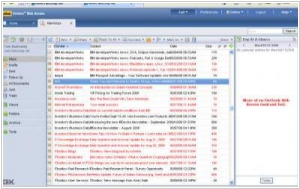
IBM has launched the latest version of its email and collaboration solution, Lotus Notes/Domino 7. This release introduces several new features, including enhanced integration with Lotus Sametime and MS Office, support for RSS and iCal, improved email group operations, threaded email view, and S/MIME support. These enhancements are applicable to both Lotus Notes and Domino Web Access. Additionally, the Domino server now offers support for the DB2 database. However, the most intriguing addition is Domino Access for Microsoft Outlook, which provides a "virtual Outlook" environment. This feature enables users to migrate their data from MS Exchange to Lotus Domino and access email and other tools through either a web interface or Lotus Notes. According to a recent IDC report, the collaboration market is almost evenly split between IBM Notes/Domino and Microsoft Exchange/Office, with Microsoft holding a slight lead at 51.2% compared to IBM's 40.1%.
2005. IBM updates Notes, Domino
IBM's Lotus division has unveiled the latest updates to its desktop messaging and collaboration server software, Notes 7 and Domino 7. The releases introduce over 100 new features aimed at enhancing collaboration and application development capabilities. IBM has focused on improving the underlying server software, performance management, and visual indicators for message organization. Domino 7 now offers improved tools for building collaborative applications, integrating with web services efforts, and supporting service-oriented architecture. The update also brings performance gains, enabling some customers to handle up to 50% more users per server with reduced processing capacity. IBM's pursuit of the collaboration software market puts it in direct competition with Microsoft, as both companies strengthen their product lines. Lotus has experienced double-digit growth, winning deals by providing a clear roadmap and smoother migration processes for customers. The release of Notes 7 and Domino 7 will help expand IBM's customer base before the launch of the upcoming major release, code-named "Hannover," in about 12 to 18 months. Pricing for the server software starts at $1,145 per processor, while the Notes 7 software starts at $101 per user, and the web-based messaging client is available for $70 per person.
2004. Microsoft links Outlook to Lotus
Microsoft has introduced a software add-on on Monday designed to enable compatibility between the 2003 and 2002 versions of Outlook and a server running IBM's Lotus Domino software. This add-on, known as the Notes Connector, is currently available for free download. It seamlessly integrates with Domino versions 5 and 6, enabling Outlook to access and retrieve various data stored on the server, including messages, calendar items, address book entries, and to-do lists. While Lotus provides its own email client, IBM has acknowledged that many customers prefer using Outlook, which is a core component of Microsoft's widely adopted Office productivity suite.
2003. Lotus unfolds for smaller customers
IBM has announced new versions of its Lotus Domino server software, specifically targeting smaller businesses and aiming to convert customers from Microsoft's Exchange. The new packages, Lotus Domino Collaboration Express and Lotus Domino Utility Server Express, offer e-mail and collaboration software with adjusted license terms and technical enhancements suitable for smaller businesses. These packages are designed for companies with 100 to 1,000 employees who haven't yet adopted other Lotus products. By providing an affordable and feature-rich collaboration solution, IBM aims to capture the attention of businesses that could benefit from such tools but have yet to adopt them. The packages are compatible with various operating systems and e-mail client software, providing broad software compatibility. IBM is actively working to revamp its Lotus division by integrating existing products and developing new software packages to expand its range. The pricing for Lotus Domino Collaboration Express starts at $89.25 per user for competitive e-mail product upgrades or $119 for new purchases, while Lotus Domino Utility Server is priced at $5,000 per server processor. Both packages are currently available.
2003. IBM to unfold new Lotus products
At the Lotusphere conference, IBM will showcase a new lightweight email application aimed at providing basic email access without the advanced features of programs like Lotus Notes/Domino and Microsoft Outlook. The modular design of the as-yet-unnamed email software allows customers to choose the specific functionalities they require and integrate email functions into their corporate portals or other frameworks. IBM's focus is on delivering essential tools without overwhelming users, catering to companies with lighter-demand users who cannot afford the full email experience. AT&T Wireless also announced a wireless service for accessing Lotus Notes on cell phones, aligning with IBM's plans for integrating Lotus products with WebSphere. The integration work simplifies administration, enhances collaboration features, and offers a consistent user experience across applications. IBM will provide developers with new tools blending features from WebSphere Studio and Rapid Application Development (RAD) to facilitate the transition to a WebSphere architecture.
2002. Lotus Notes/Domino 6.0 improves Web- and mobile access
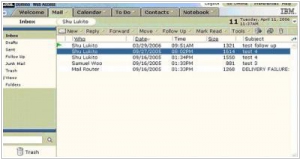
Today, IBM has unveiled the latest iteration of its collaboration and email management suite, Lotus Notes/Domino 6.0. A noteworthy advancement in this new version is the enhanced web and mobile accessibility. The revamped web client, Domino Web Access (formerly known as iNotes Web Access), allows users to conveniently access their mail, calendar, and contacts through desktop browsers or mobile devices such as PDAs or smartphones with web support. Moreover, the updated Lotus applications boast improved security measures, a spam filter, an enhanced user interface, and expanded capabilities for integrating the software with external data sources.
2002. Groove software to jive with Lotus Notes
Next week, Groove Networks will unveil an upgraded version of its collaboration software, Groove Workspace 2.1, which will feature integration with IBM's Lotus Notes and improved instant messaging capabilities. This release comes in tandem with Groove's introduction of a toolkit for developing collaborative applications using Microsoft's Visual Studio.Net. Groove's software facilitates the creation of peer-to-peer networks, allowing users to share data and collaborate without the need for servers. The Lotus Notes integration is both a significant move for Groove Workspace's functionality and a symbolic gesture, as Groove was founded by Lotus Notes creator Ray Ozzie. The upgraded software enables users to seamlessly transfer communications from their email inboxes or Lotus Notes databases into Groove's shared workspace. Additionally, the enhanced instant messaging capabilities aim to integrate communication technology into the collaborative process, eliminating the need for standalone instant messaging software. This comes at a time when more corporations are recognizing the importance of instant messaging in their operations. The Groove Toolkit for Visual Studio.Net highlights the growing partnership between Groove and Microsoft, following Microsoft's investment in Groove and their plans to support Microsoft's SharePoint Team Services. The toolkit allows developers to create and test Groove applications within Visual Studio.Net, aligning with Microsoft's .Net Web services strategy. However, Groove advises developers to consider this release of the toolkit as a preview version suitable only for pilot projects.
2001. iNotes Web Access - access Lotus Notes from any browser
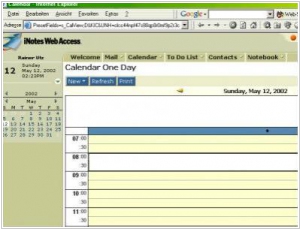
Today, as part of the Lotus Notes/Domino R5.0.8 update, the highly anticipated web-client iNotes Web Access has finally been launched. This client enables users to access Lotus Notes e-mail and collaboration tools through any web browser. It expands the functionality of the existing Lotus Domino server by offering web-based access to messaging applications. Although iNotes Web Access does not offer the complete set of features found in the desktop client, Lotus Notes, it proves to be an invaluable tool for employees who frequently travel or work remotely from home.
1999. Lotus is losing ground to Exchange
According to a recent IDC report, there is a shift in leadership within the groupware market. In the first half of this year, the number of Microsoft Exchange licenses sold (8.1 million) has surpassed the number of Lotus Notes/Domino licenses sold (7.4 million). Novell GroupWise retains its third-place position, but with a significant gap (2.69 million). Lotus had been a strong frontrunner in the groupware market until last year. However, ongoing delays in the release of the new version of Lotus Notes/Domino 5 played a major role in many new customers choosing Microsoft Exchange instead. It is worth noting that Lotus Notes still maintains a lead over Exchange in terms of the number of licenses sold in Europe and Asia, and it still boasts a larger client base accumulated over the years.
1999. Not joke: Lotus Notes / Domino 5.0 is officially available
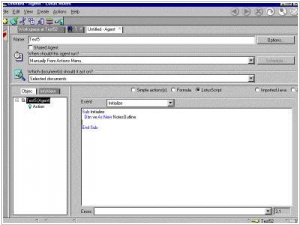
Today, on April 1st, IBM has officially launched the highly anticipated new iteration of its email and collaboration solution, Lotus Notes/Domino 5.0. This release has faced multiple delays, extending over a year, resulting in IBM losing its leadership position in the groupware market. The updated version encompasses a comprehensive range of features, including an email client-server with support for S/MIME, POP3, SMTP, and IMAP protocols, calendars, document management capabilities, news groups, an HTML editor, a built-in browser, and an integrated AOL messenger for instant messaging. Lotus Notes 5.0 boasts a redesigned user interface and introduces support for LDAP protocol and Java applets. Notably, the Lotus Notes client now consists of three distinct components: Notes Client for the user interface, Domino Designer for application development, and Domino Administrator for administrative tasks. The solution offers expanded support for programming languages such as Java, C++, Javascript, HTML 4.0, and XML. Additionally, IBM has refuted rumors suggesting the separation and individual sale of Lotus Domino and Notes, reaffirming their commitment to providing the integrated product.
1998. IBM integrates Lotus Domino with Microsoft's products
Despite the intense competition between IBM's Lotus Notes/Domino and Microsoft Exchange, IBM recognizes the importance of integrating its product with widely-used Microsoft applications. Today, IBM made an announcement regarding the release of the Domino Design Components for Microsoft FrontPage. This package includes various components that enable the creation of web pages, sites, and portals on the Lotus Domino server using the popular Microsoft HTML editor, FrontPage. Moreover, Lotus Domino now offers support for the Microsoft IIS web server, enabling access to Domino through the internet.
1996. Lotus Domino II will allow to use browser and E-mail client instead of Lotus Notes
Today, during the PC Expo conference, IBM showcased an upgraded edition of the Lotus Domino server. The initial version of Domino was launched a month ago and introduced an integrated web server, enabling access to Lotus Notes information through an HTML browser. In this latest iteration, users are provided with the option to forego the use of proprietary protocols and the Lotus Notes client, instead utilizing any email client and browser. This flexibility is made possible through the support of open protocols such as TCP/IP, HTTP, SMTP, POP3, IMAP4, and LDAP. Consequently, IBM aims to utilize one of the key features of Notes, data replication, for browsers and email clients as an alternative to the Notes client. Domino II serves as IBM's response to Netscape Intranet, an upcoming intranet solution slated for release by Netscape over the next 18 months.
1996. Lotus Domino adds Web-technologies to Lotus Notes
Despite its strong position in the enterprise groupware market, Lotus Notes now faces a new threat from cost-effective web-based solutions that are emerging in the industry. In order to stay competitive and align with current trends, IBM has unveiled an upgraded version of the Lotus Notes server, now known as Domino. The Domino server incorporates a built-in web server, enabling users to access data stored in the Lotus database through the integrated HTML browser within Lotus Notes. IBM had previously integrated a web browser into Lotus Notes 4 and also released the InterNotes Web Publisher, which facilitates the publication of data from Notes to the internet.

